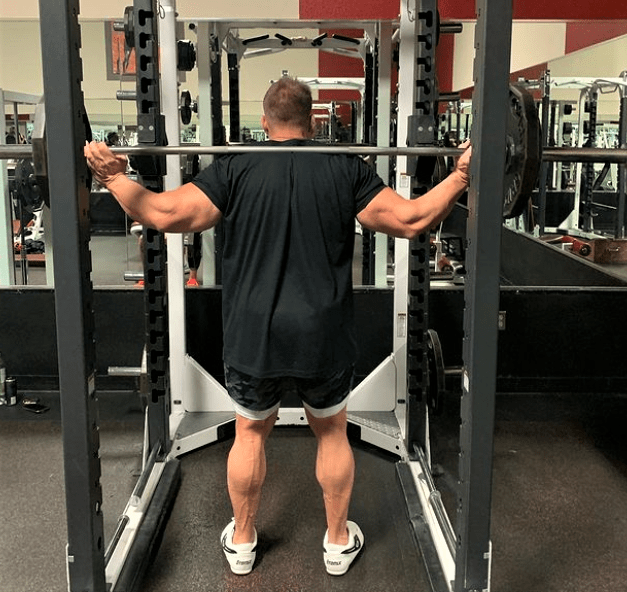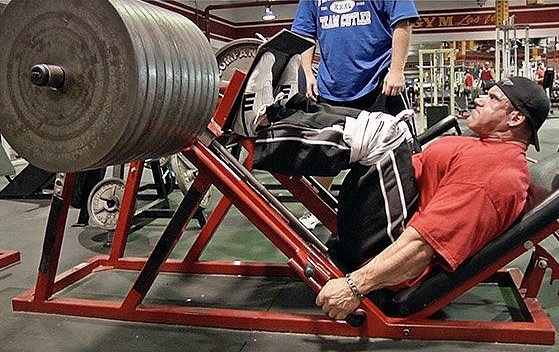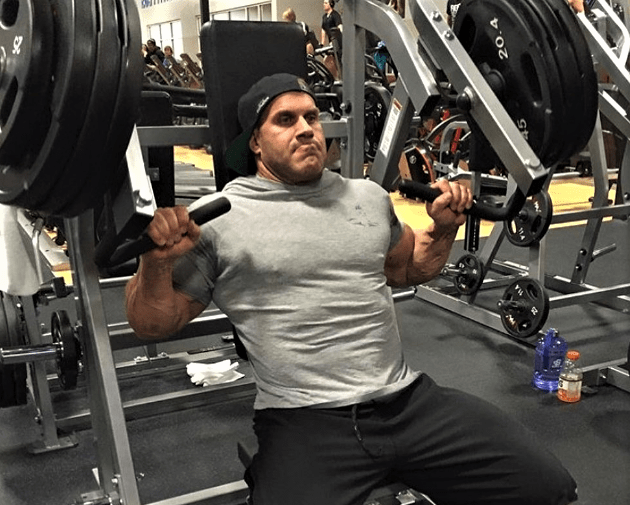Jay Cutler still cranks up the volume / Instagram
Imagine it’s 1979 and you want to do pullups. Already hanging from the bar is Roy Callender, third place finisher in the previous year’s Mr. Olympia. You’d better hope he lets you work-in, because he’s not moving on for another hour or so. And 25 sets at the pullup bar is just the beginning. Callender’s back routines typically consisted of 85 sets, and his entire pull workout (back/biceps/forearms) workout could last six hours! All his bodyparts went through similar endurance sessions. Roy Callender is an extreme example of volume training, but his success illustrates that more is sometimes better. With proper nutrition and enough rest between workouts, volume training can lead to more voluminous muscles.
VOLUME CONTROL
In the beginning, which is to say the first half of the 20th century, bodybuilders trained their entire physiques in every workout. By necessity, they couldn’t do many sets per body part per workout until split routines divided their workload. When routines were broken up, volume climbed. It peaked in the late ’70s and early ’80s with Callendar and cohorts doing in excess of 40 sets in each bodypart routine.
But, what about overtraining? The smart-ass answer is: “There’s no such thing as overtraining, only under-recovering.” This is an over-simplification, but there is truth to it. If you allow at least three days between working the same body part and get enough sleep and the proper nutrition, the length or intensity of your workout shouldn’t hinder gains. Overtraining is a long-range acute condition, and it’s actually quite rare. Over-reaching, a short-term decline in performance, is much more common. But over-reaching isn’t much of a problem if you manage it correctly. In fact, it can be beneficial to spark gains.
So, overtraining isn’t a reason to not do 85 sets for back. Intensity and time constraints probably are. Nobody sprints through an ultra-marathon. Likewise, there is a limit to how long most people can maintain even moderate intensity when they’re grinding through over 500 reps per workout. Boredom and complacency can set in. Your body’s energy and hormonal levels will lag. And, most people simply don’t have three hours (let alone six hours!) to devote to working out daily. So let’s acknowledge that ultra-marathon, weight-training workouts are incredible feats. Clearly, some bodybuilders have had great success with them.
But let’s also move on to a more realistic and effective style of volume training and an even more successful bodybuilder.
JAY CUTLER VOLUME TRAINING
Four-time Mr. Olympia Jay Cutler said: “I’m a volume trainer, and I always will be. I want to make sure I’ve done all I can in every workout. I’m not concerned with how many sets that takes.” What follows is the quad routine Cutler used in preparation for the 2003 Mr. Olympia (he finished second to Ronnie Coleman).

JAY CUTLER’S VOLUME QUAD WORKOUT
Leg Extension — 2 sets x 10-15 reps
Squat — 4 sets x 6-10 reps
Leg Press — 3 sets x 8-10 reps
Hack Squat — 3 sets x 8-10 reps
Stationary Barbell Lunge — 2 sets x 8-10 reps
Stationary Dumbbell Lunge — 2 sets x 8-10 reps
Smith Machine Front Squat — 3 sets x 8-10 reps
Leg Extension — 4 sets x 6-8 reps + 5-6 reps*
* These are drop sets. The initial 6-8 reps are followed immediately with 5-6 reps with half the initial weight.

Jay Cutler’s quad routine has a more realistic 23 working sets. (He also typically did one warmup set of each exercise, so 31 total sets.) You’ll also notice it covers a lot of exercises. In that manner, he worked complex muscle groups, like quads and back, from a variety of angles. Cutler achieved such a diversified attack by doing only two or three working sets of most exercises. Another factor was reduced rest. By keeping his breaks between sets to around one minute, he was able to get through his entire workout before his intensity waned.
Similarly, the four-time Mr. O kept his reps in the low-moderate range, so he could impart maximum intensity throughout each set. Still another factor he used was a late-workout blow-out. Note that he ended his quad workout with drop sets, a technique that boosted intensity when it was most likely to lag. All-in-all, Jay Cutler managed to turn up the volume and variety to marathon levels but still sprint through his workouts with ultimate effort from his first rep to his last.
VOLUME TRAINING BASICS
✷ Do 20-28 working sets for large body parts, like back and quads. Do 14-18 working sets for smaller body parts, like triceps and calves.
✷ Workout five or six days weekly, and train all body parts, other than abs and calves, only once a week. This will allow you to keep your workouts to a manageable length and not over-stress muscles.
✷ Keep all workouts to two hours or less.
✷ In order to maintain your intensity, increase your overall workout volume gradually. Don’t add more than two sets per week.
VOLUME TRAINING TIPS
✷ Supersets and giant sets can help you increase rep volume without inflating workout time.
✷ Doing only two or three sets of an exercise allows you to work complex body parts, like back and quads, from a variety of angles with lots of exercises.
✷ Work quickly. You don’t want your intensity to wane over a lengthy gym session. Rest only 60-90 seconds between sets.
✷ Utilize techniques like drop sets late in your workout to maintain your intensity until your last reps.
✷ Avoid high-rep sets. Combined with a high-set workload, your intensity is prone to lag when doing sets of over 15 reps. Stick to maximum weights for moderate reps.
Related: German Volume Training
















































